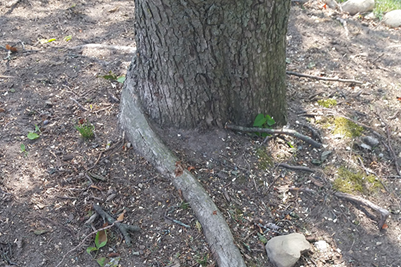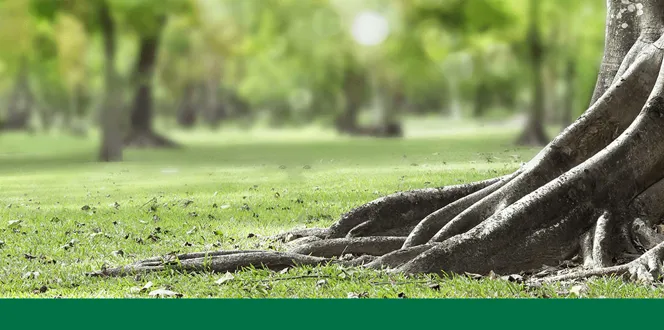There’s something so satisfying about watering our trees each week and watching it seep into the soil. Plus, it’s one of the best ways we can give our plants a little TLC.
As we watch the water disappear, we don’t know what’s happening beneath the surface. Trees often suffer from a common problem lurking underground that’s hard to see–compacted soil.
Compacted Soil Around Trees – Symptoms, Diagnosis and Restoration
Learn a few remedies for soil compaction to help your trees now and make it easier to plant new trees, too. But first, test your soil for symptoms.
Why is compacted soil a problem around trees and plants?

As you walk or have heavy equipment like lawn mowers zip over the ground near your tree, the weight packs soil particles closer together. So, your tree’s soil becomes compacted.
Consequently, compacted soil makes it difficult for…
- Water to flow through to the tree roots, causing runoff and dehydration.
- Roots to get enough nutrients, leading to slowed growth.
- The tree to thrive because of the lack of water and limited air flow.
How do I know if my tree has compacted soil?
If your tree seems to be struggling and isn’t growing much, look for these signs of soil compaction:
- Poor growth and reduced number and size of leaves
- Branch dieback
- Susceptibility to pest problems and environmental stress
- Failure of tree to respond to proper care
Then, get ready to test! All you need is a screwdriver. When compacted, it’s difficult to push the screwdriver deep down. Or, cut out a chunk of soil to sneak a peek. If your soil is compacted, it will look dull, grayish, and awfully dry.
I’m thinking about planting trees in compacted soil. Is that ok?
Hold off on planting new trees until you fix the soil problem. Adding new plants to suffering soil will set them up for a slow, weak start.
How can I restore my compacted soil?
If the problem is minor, mix compost into the top 9 to 12 inches of soil to add a surge of organic matter that will help the soil to develop structure. Then, create a mulch ring around the tree to protect the surface and provide a continual supply of more organic matter. Just be sure to avoid volcano mulching! Hopefully, this will prevent people (and lawn mowers) from compacting the soil again.
And ready for this? Add earthworms! Since they’re attracted to mulch, they may even gather there naturally! Worms eat through compacted soil leaving many large tunnels behind, helping restore a healthy flow of air and water.
If the problem seems more serious (and you may need an arborist to confirm that), try aerating or vertical mulching. By drilling holes into the soil, you break up those compressed particles and provide more air. So, your tree will be able to breathe easier and have better access to nutrients.





